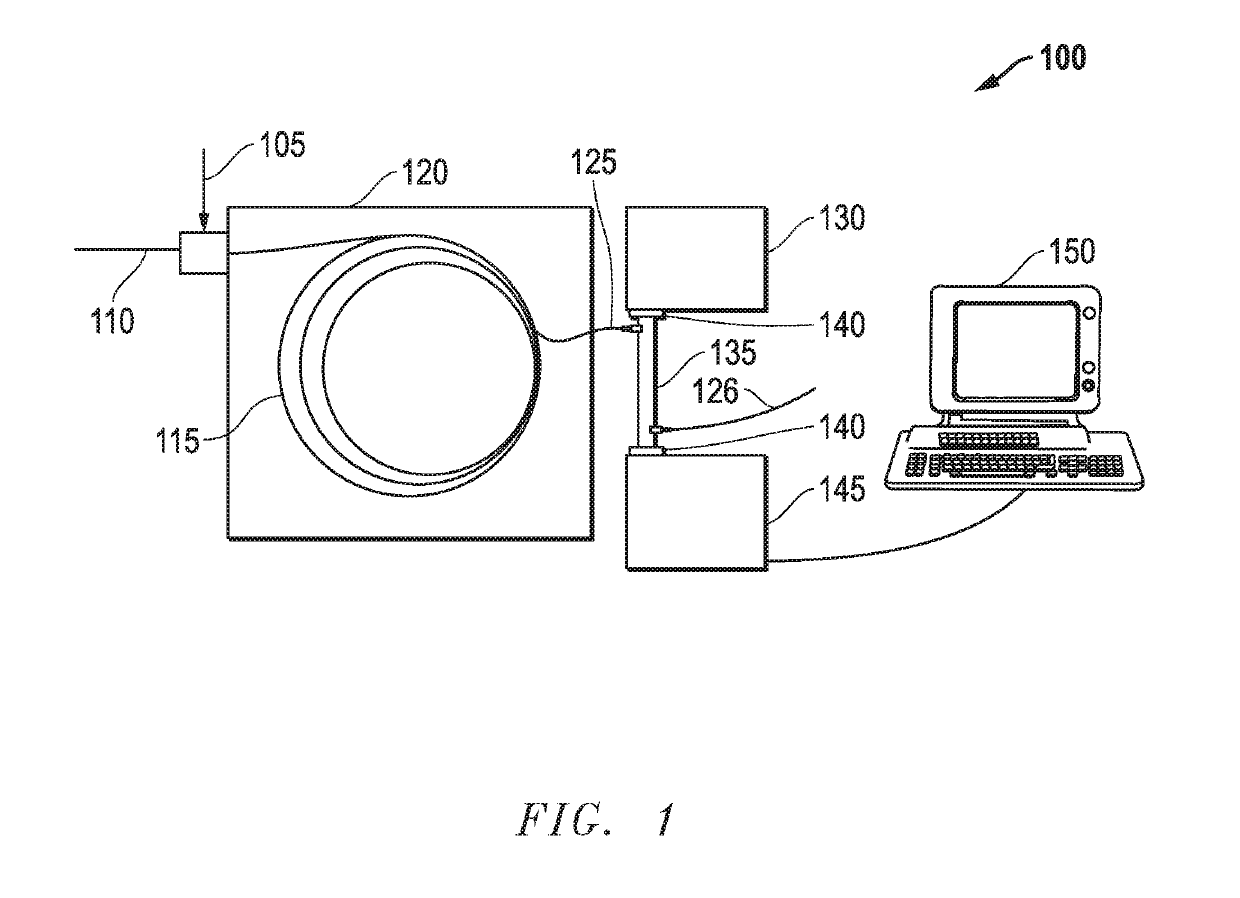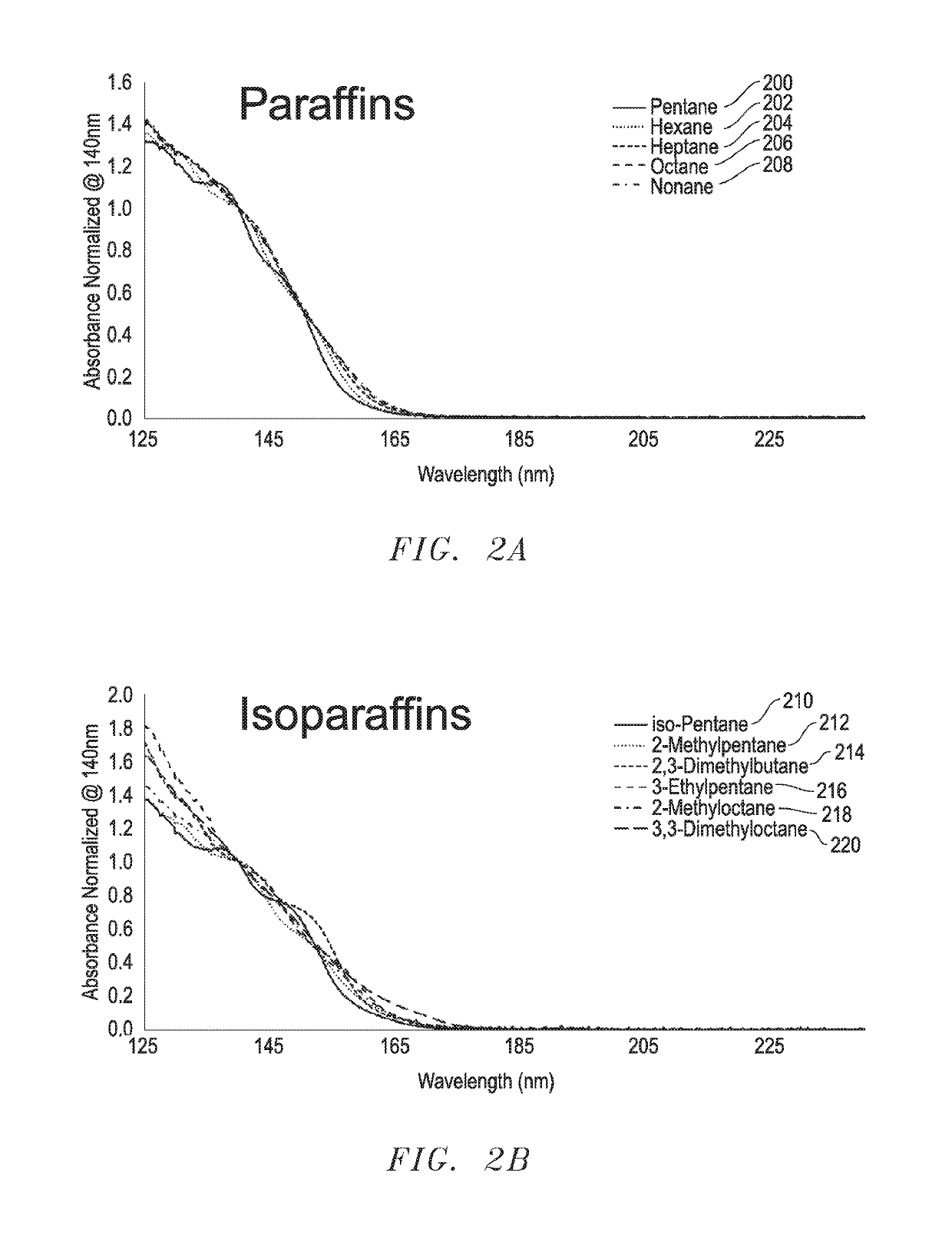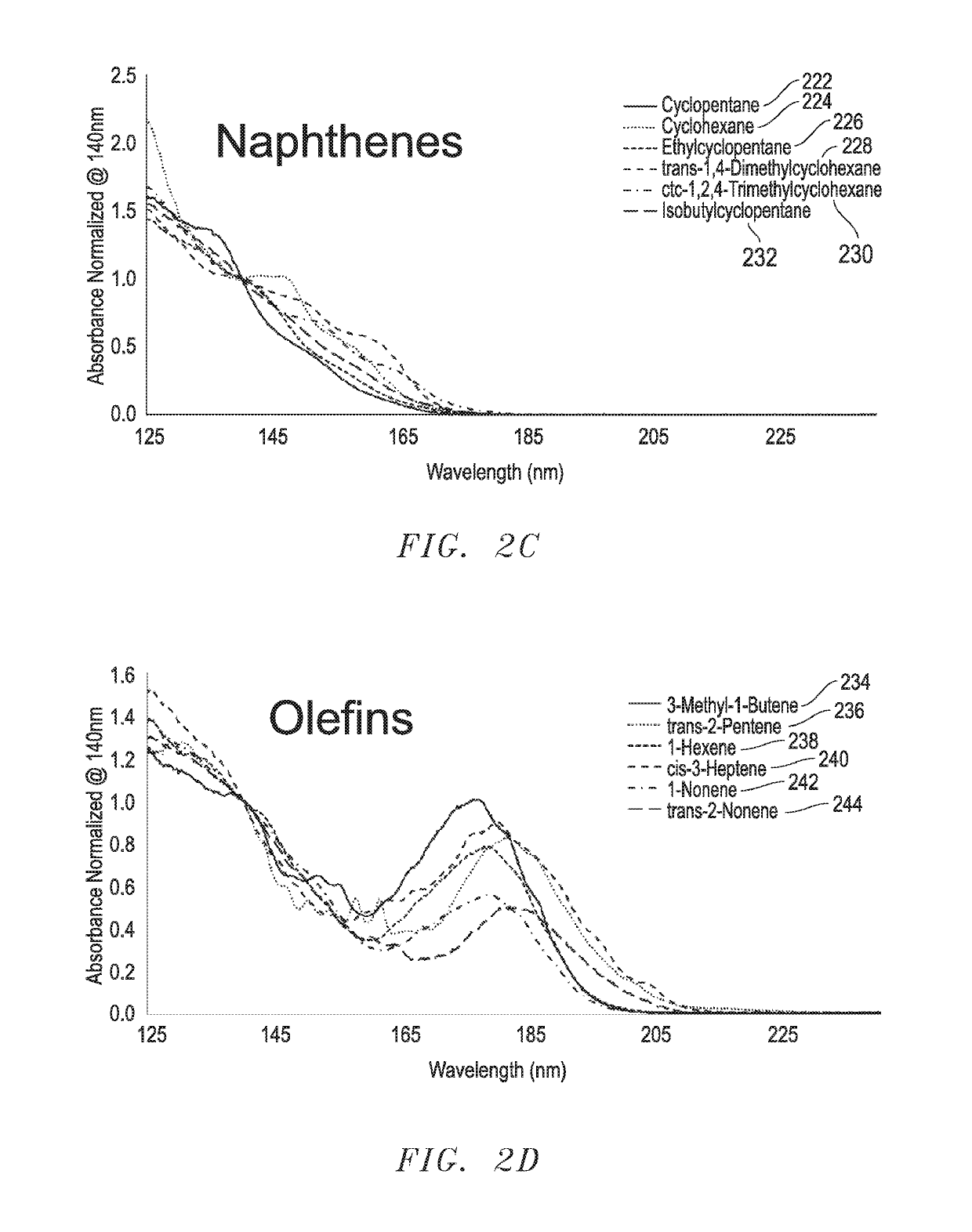Method for detailed and bulk classification analysis of complex samples using vacuum ultra-violet spectroscopy and gas chromatography
a vacuum ultraviolet spectroscopy and bulk classification technology, applied in the field of absorption spectroscopy, can solve the problems of inability to achieve detailed and bulk classification analysis of complex samples, insensitivity to some compounds of interest, carbon dioxide and water,
- Summary
- Abstract
- Description
- Claims
- Application Information
AI Technical Summary
Benefits of technology
Problems solved by technology
Method used
Image
Examples
Embodiment Construction
[0041]One embodiment of the system for performing the techniques described herein is illustrated in FIG. 1. As shown in FIG. 1, an analysis system 100 is provided that includes a gas chromatograph (GC) having the capability to vaporize liquid samples and move the sample through a GC analytical column. A carrier gas inlet 110 is provided along with a sample injector inlet 105. The carrier gas and sample are provided to a GC column 115. The GC may be equipped with an oven 120 capable of programmed temperature control. The GC may be equipped with a programmable split flow control, and is further capable of operating in either constant inlet pressure or constant flow mode. A VUV spectroscopy detector is connected to the end 125 of the analytical column 115 via a heated transfer tube (transfer tube not explicitly shown in FIG. 1). The VUV spectroscopy detector may include a source module 130 providing a VUV light source, a gas flow cell 135, a spectrometer detector module 145, windows 14...
PUM
| Property | Measurement | Unit |
|---|---|---|
| run time | aaaaa | aaaaa |
| wavelength region | aaaaa | aaaaa |
| wavelength | aaaaa | aaaaa |
Abstract
Description
Claims
Application Information
 Login to View More
Login to View More - R&D
- Intellectual Property
- Life Sciences
- Materials
- Tech Scout
- Unparalleled Data Quality
- Higher Quality Content
- 60% Fewer Hallucinations
Browse by: Latest US Patents, China's latest patents, Technical Efficacy Thesaurus, Application Domain, Technology Topic, Popular Technical Reports.
© 2025 PatSnap. All rights reserved.Legal|Privacy policy|Modern Slavery Act Transparency Statement|Sitemap|About US| Contact US: help@patsnap.com



